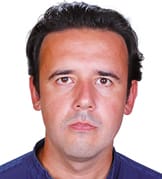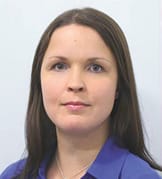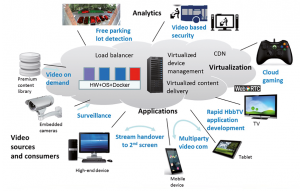Virtualized video services



Tiia Ojanperä
VTT Technical Research Centre of Finland Ltd.
The motivation for CELTIC project VIRTUOSE was to develop video services that are scalable, secure and easily deployable on different computing platforms. This was achieved by using cloud computing and virtualization techniques for deployment of video services in order to realize different core use cases.
The three-year project (2016-2019) contributed to several R&D areas in the context of the core use cases. VIRTUOSE was a joint undertaking of 19 industrial and research partners from five European countries: Finland, Germany, Romania, Spain and Turkey. Nokia was the project coordinator and VTT the technical coordinator in VIRTUOSE.
Approach
The four core use cases studied during the project were: cloud gaming, multiparty video communications, video transcoding & distribution, and video analytics. These video services benefitted from virtualized components and a common system architecture, allowing easy and dynamic video service deployment and scaling. Within the work areas, several sub-use cases were analysed and their implementations showcased in the form of demonstrators.
Novel cloud computing techniques, consisting of virtualization solutions, such as KVM, and Linux containers, such as Docker and LXC, were used to containerize the video services. Rancher was deployed to manage containerized service instances. In this manner, the VIRTUOSE architecture is able to offer solutions to the trade-off between distribution of the computation and localization of the data, as well as making the source code portable to different virtualized platforms.

The figure shows the applicationes targeted by VIRTUOSE and a common framework for their realization.
Achieved results
The main results of the VIRTUOSE project include a common architecture for the different core use cases and virtualized components for video coding, analysis and streaming that can be easily deployed, maintained and scaled using lightweight containers. The project advanced the state-of-the-art through several algorithmic and system-level contributions in different domains.
For the cloud gaming use case, a low-latency video encoder was developed using a low-complexity approach called logarithmical hopping encoding (LHE). The implementation was published as open source and integrated in the popular multimedia framework FFmpeg. For the video transcoding & distribution use case, Docker was used to containerize different video services and showcase a scenario where a video service provider sets up a new video distribution service for end users. In the developed demonstrator, video is transcoded in real-time, streamed over a content delivery network (CDN), and accessed with a HbbTV compatible set-top box. Virtualizing different components of the processing and transmission chain significantly advanced the flexibility, time to market and scalability of video-on-demand (VoD) services.
For the multiparty video communications, a new motion adaptive layer selection algorithm was developed, which provides continuous video delivery and highly increased quality of experience (QoE), especially on high motion activity video streams. Furthermore, an adaptive approach was adopted, in which containers for video conferencing services are scaled based on the number of participants. Efforts in the video analysis were focused on the development of low-complexity algorithms and approaches based on neural networks that provide high accuracy. Specifically, an object tracking algorithm was developed that operates directly on compressed video data, and a new approach for object detection was developed that allows weakly-supervised training using transfer learning and synthetically generated training data. Several analysis algorithms were integrated into a virtualized platform for camera-based vehicle management in challenging parking lot environments.
Live demonstrators were showcased in both project-specific and public events. The VIRTUOSE consortium also actively disseminated the results in scientific, industrial and standardization forums.
Conclusion
VIRTUOSE contributed to several R&D areas, ranging from computing, telecommunication and image processing to artificial intelligence and neural networks, thanks to the wide coverage of the considered use cases. Development of a new low-latency video encoder for cloud gaming, VoD service streaming through CDN by using virtualized components for video encoding and distribution, introduction of a new motion adaptive layer selection algorithm for video conferencing and low complexity algorithms based on neural networks for video analysis were the main achievements. The project also conducted successful demonstration, dissemination and exploitation activities, including scientific and technical papers, patents applications, master and PhD studies and participation to a number of events and exhibitions.
› Further information
› VIRTUOSE project page – http://www.tut.fi/virtuose/